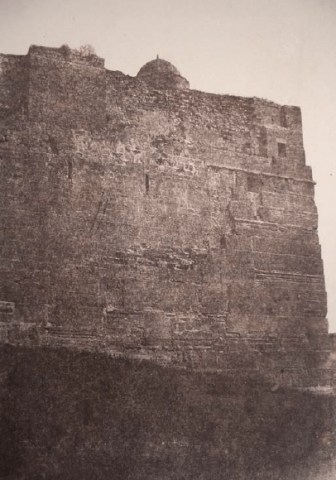A pioneering figure in the use of photography for archaeological study, Auguste Salzmann was a French painter and archaeologist whose work bridged art and science. Originally trained as a painter of landscapes and religious scenes, Salzmann turned to photography during the 1850s, becoming one of the earliest to use the medium in archaeological documentation. His most significant achievement is the 1856 publication Jérusalem, a monumental photo book comprising 174 images taken during a four-month expedition in 1854. Intended to provide visual evidence in scholarly debates on the age and origins of Jerusalem's ancient walls, the photographs are notable for their compositional rigour and scientific intent.
Salzmann employed the salt print technique, whose matte texture and soft tonal range result from the image forming within the fibres of the paper. This gives the photographs a velvety, atmospheric quality that enhances the tactile presence of stone and shadow. Combined with Salzmann’s carefully chosen angles and monumental subjects, the effect is strikingly modern—transforming archaeological documentation into images that verge on abstraction. Though commercially unsuccessful at the time due to its high price, Jérusalem remains a landmark in 19th-century visual archaeology and an early example of photography’s ability to merge scientific observation with artistic vision.
